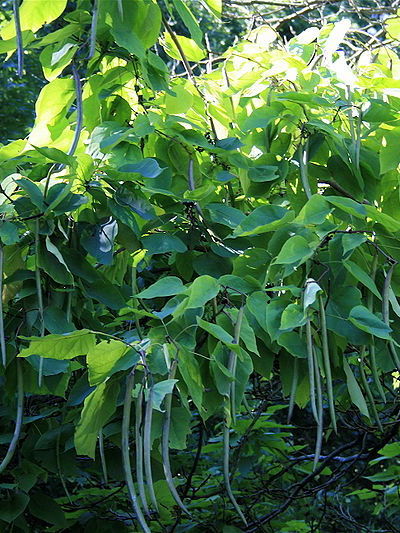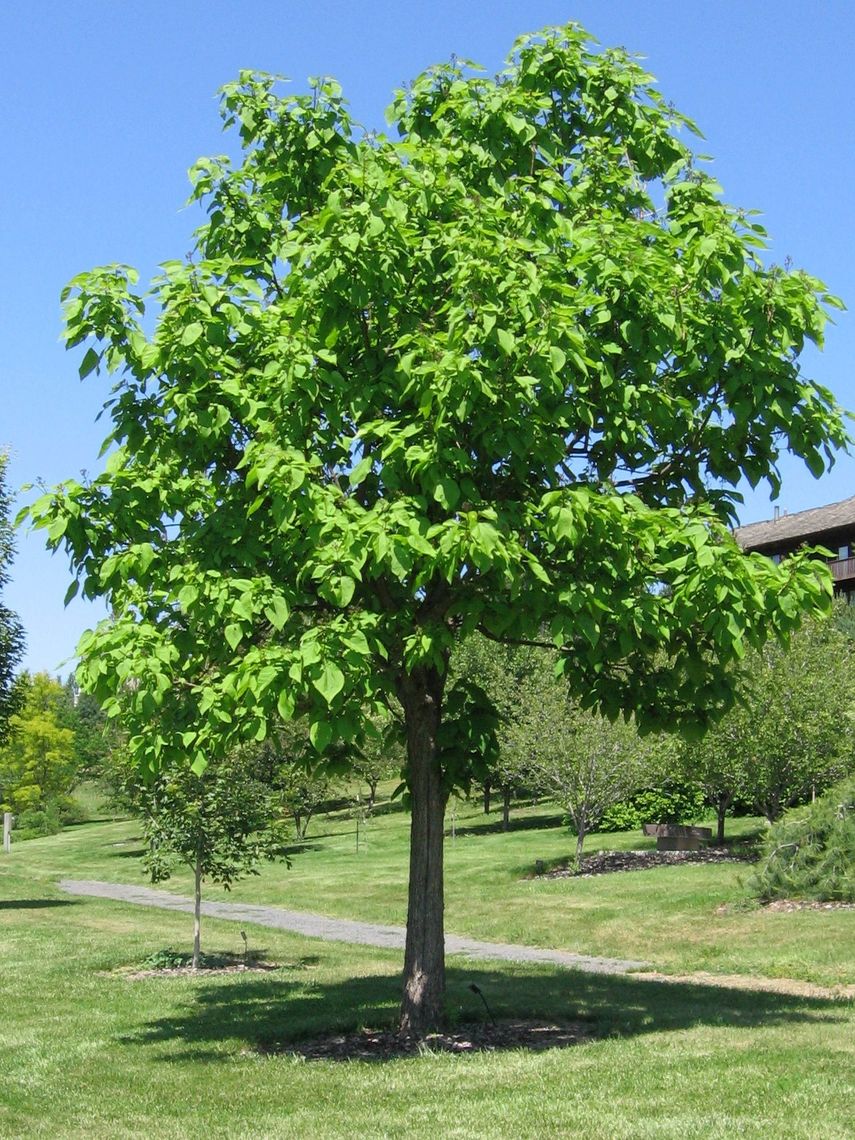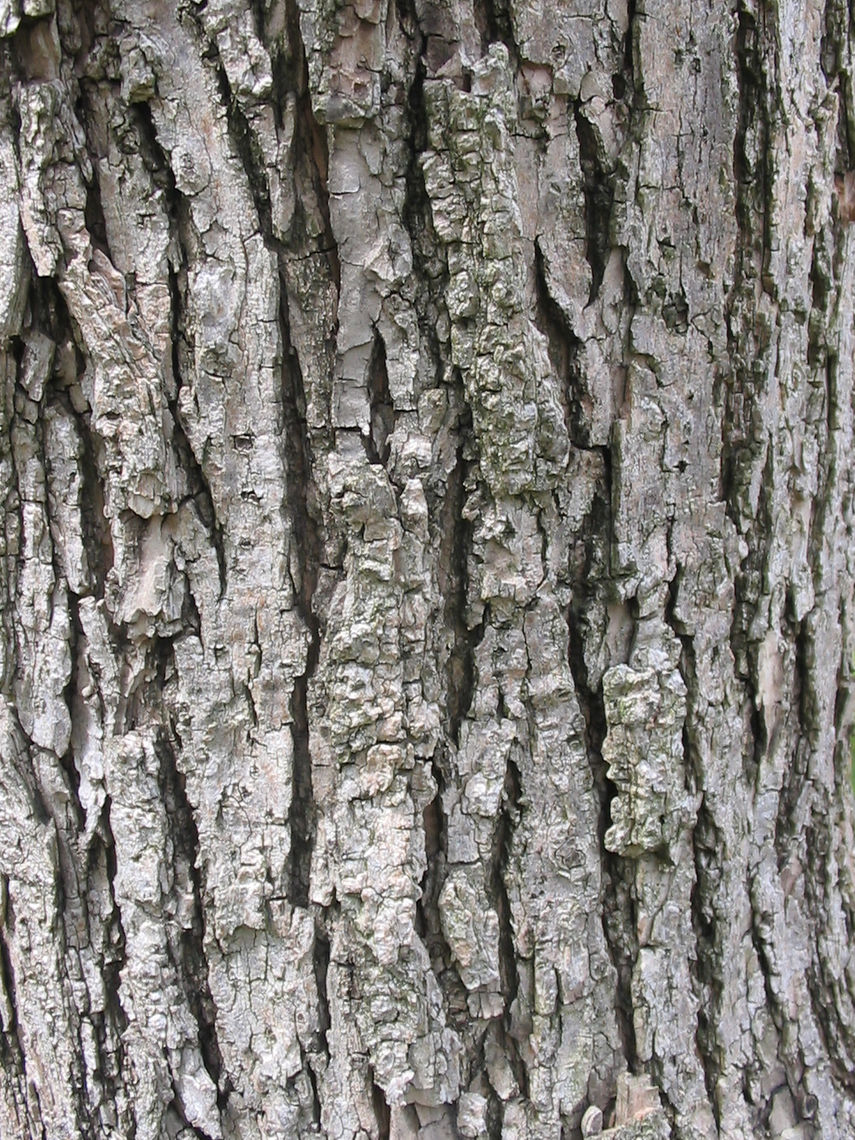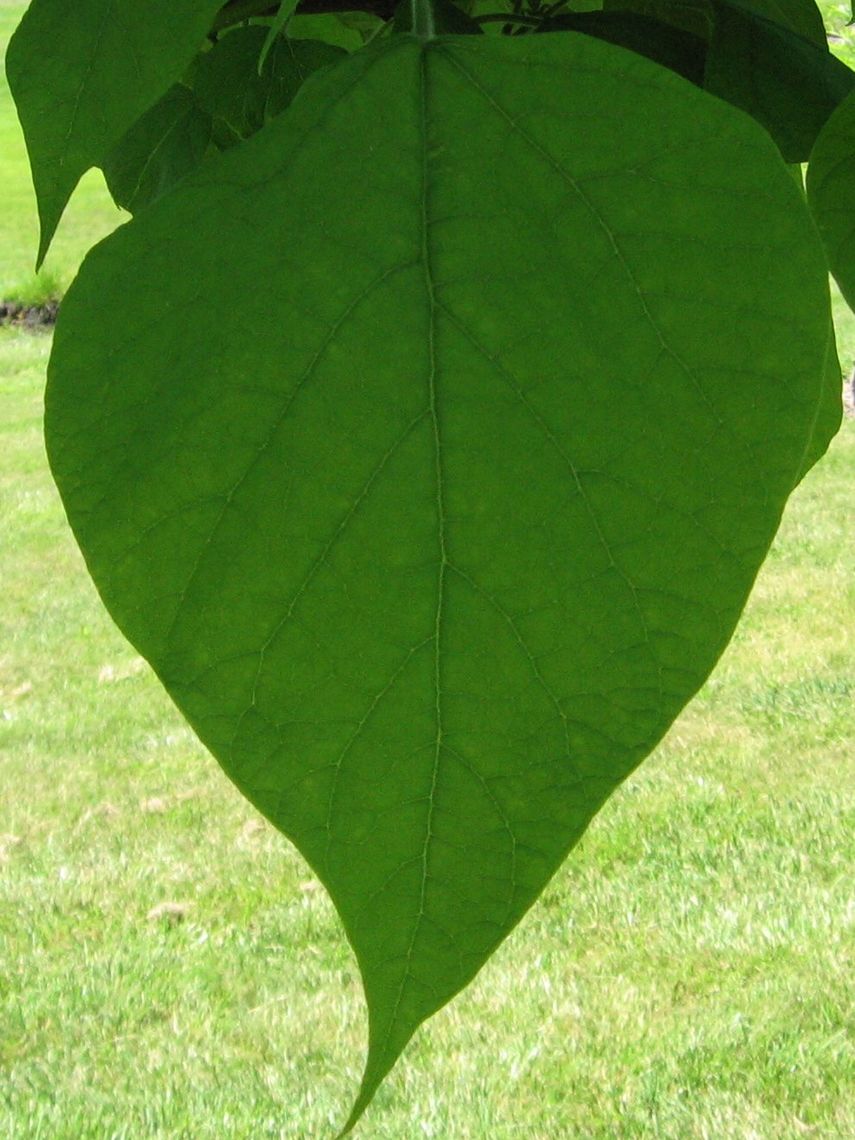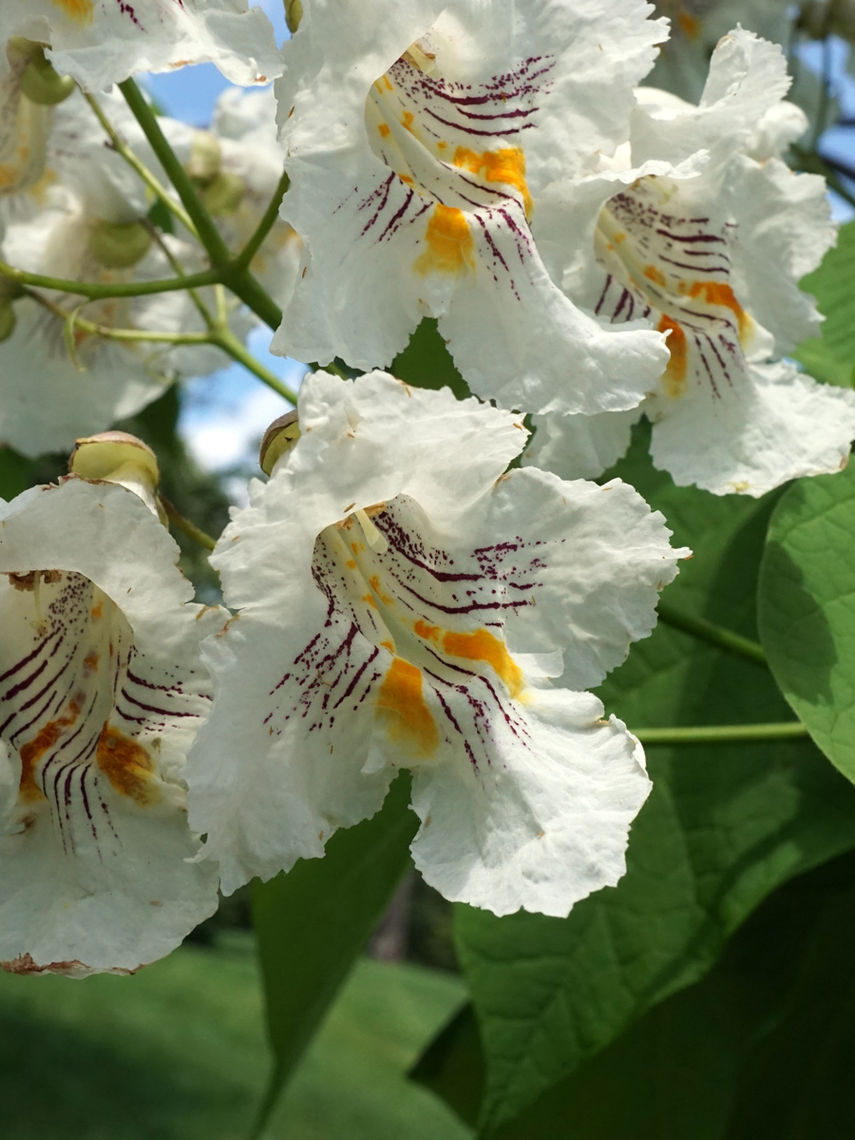Northern Catalpa (Catalpa speciosa)
The northern catalpa is known for its fragrant white flowers that appear in late spring. These flowers are bell shaped, with crinkled petals, and have purple and yellow inner spotting. The tree's leaves are large, light green, and heart-shaped. The bark is dark gray and becomes scaly with age. This tree is known for its toughness and hardiness, and so it is often found on Midwestern farmsteads for this reason. The northern catalpa is also sometimes called a cigar tree, due to its long dark brown seed pods, that vaguely resemble cigars. This tree attracts insect pollinators.
Family: Bignoniaceae (Bignonia)
Characteristics: The 6-inch to 8-inch-long leaves are light green or yellow-green and are broad ovate to ovate-oblong. In the fall, leaves turn a prominent yellow. The tree's white flowers are bell shaped and orchid like, with a purple or yellow inner spotting that appears in late spring. These flowers give way to long and slender green seed pods, which turn dark brown once they have matured in the fall. At this point, the seed pods will split open and release the seeds within. Mature bark is a pale gray-brown and is cracked and prominently ridged. This tree has a narrow-rounded or irregularly oval crown. It grows 40-60 feet high and 20-40 feet wide.
Foliage: Deciduous (leaves lost seasonally)
Geographic Origin: North America: Arkansas, Missouri, Illinois, Indiana (non-native)
Cultivation Notes: Requires medium maintenance. Does best in full sun to part shade. Prefers alkaline, moist, and well drained soils, though is tolerant of a wide range of soil conditions, including dry soils. This species is also tolerant of seasonal flooding.
Number on Campus: 1
Sources: Dirr, Morton Arboretum, Missouri Botanical Garden

